Nothing carries the promise of spring quite like the drumming of a great spotted woodpecker.
Beginning on warmer days in late winter, these brief, resonant bursts are delivered from on high.
This is not the sound of a hole being excavated, which is a more discreet tap-tapping. The drumming is territorial, and it’s the volume and resonance that counts.
For this reason great spotted woodpeckers favour high spots on hollow trunks or branches.
They rather like the metal casing on top of a telegraph pole too. It’s like they’ve found the amp that goes all the way to 11.
The great spotted is by far the commonest of our three woodpeckers in most parts of the UK, and by far the likeliest drummer we will hear.
It’s a short burst, less than a second long, followed by a long pause.
It may prompt a sense of anticipation in the listener - did I really hear that? Will it sound again? Has it gone? And there it is again.
It's like a microcosm of the experience of those occasional warm, song-filled days early in the year - the ones that seem so assured of the coming season, only to be supplanted by a convulsion of cold windy weather. The memories of which leave you wondering: did I dream the whole thing up?
Whatever the season, the presence of a great spotted woodpecker is often given away by its loud contact call - an exclamatory ‘chick!’.
This is given both in flight and when perched, sometimes insistently. And it’s a sound that can be heard in an increasing number of places, perhaps due to the great spotted woodpecker’s opportunistic tendencies.
While their diet is based on invertebrates prised from under bark or out of rotting wood, they will take other birds’ eggs, and nestlings too. And they don’t mind hanging from a peanut feeder in the garden, which may be the most important factor in their recent successes.
So whether you are deep in the woods or at the local park, listen for a drum roll and an explosive chick.
Great spotted woodpeckers are widely distributed across Europe and Asia. Over the last twenty years they have begun to breed on the island of Ireland too. For more about their behaviour and ecology visit the British Trust for Ornithiology.
See also (but probably not): Lesser Spotted Woodpecker
🔗 Link of the week
Bring Birds Back - The Noise Report
How does noise pollution affect the health of birds, and humans? I learnt a lot from this fascinating podcast presented by public health scientist Dr Erica Walker, which reveals some surprising impacts. Such as: when noise disrupts predator species, the preyed-upon sometimes benefit; and that the typical hearing range of songbirds is (spoiler) not actually as good as that of humans.
Thanks for reading and listening. This is the fifth instalment in 2024’s cycle of Shriek of the Week. You can catch up with Robin, Great Tit, Song Thrush, and Blackbird (the last includes an explanation of how this all works in 2024).
A warm welcome to new subscribers, including those who found their way here via Lev Parikian’s Six Things. If you haven’t subscribed to Lev already, why not?
For those in a position to do so, taking out a paid subscription to Shriek of the Week supports me to write more and improve what I do. It also gets you an invite to the monthly Early Bird Club call, on the first Saturday of the month (8-9am UK time), and discounts to some in-person events in the UK.
Find more birds by ear in 2024 with Birdsong Academy:
British Birdsong Essentials course (begins 24 Feb)
Up With The Birds dawn chorus calls (free, March - May)
Media credits:
Thanks to Hans Veth for the great posted woodpecker image, via Unsplash, and to schauhi on Pixabay for the lesser spotted woodpecker image.
Thanks as ever to to The British Library for making so many bird sounds available via their Soundcloud.

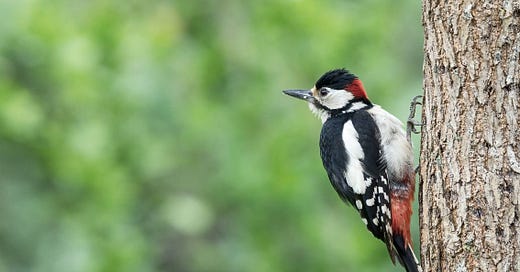


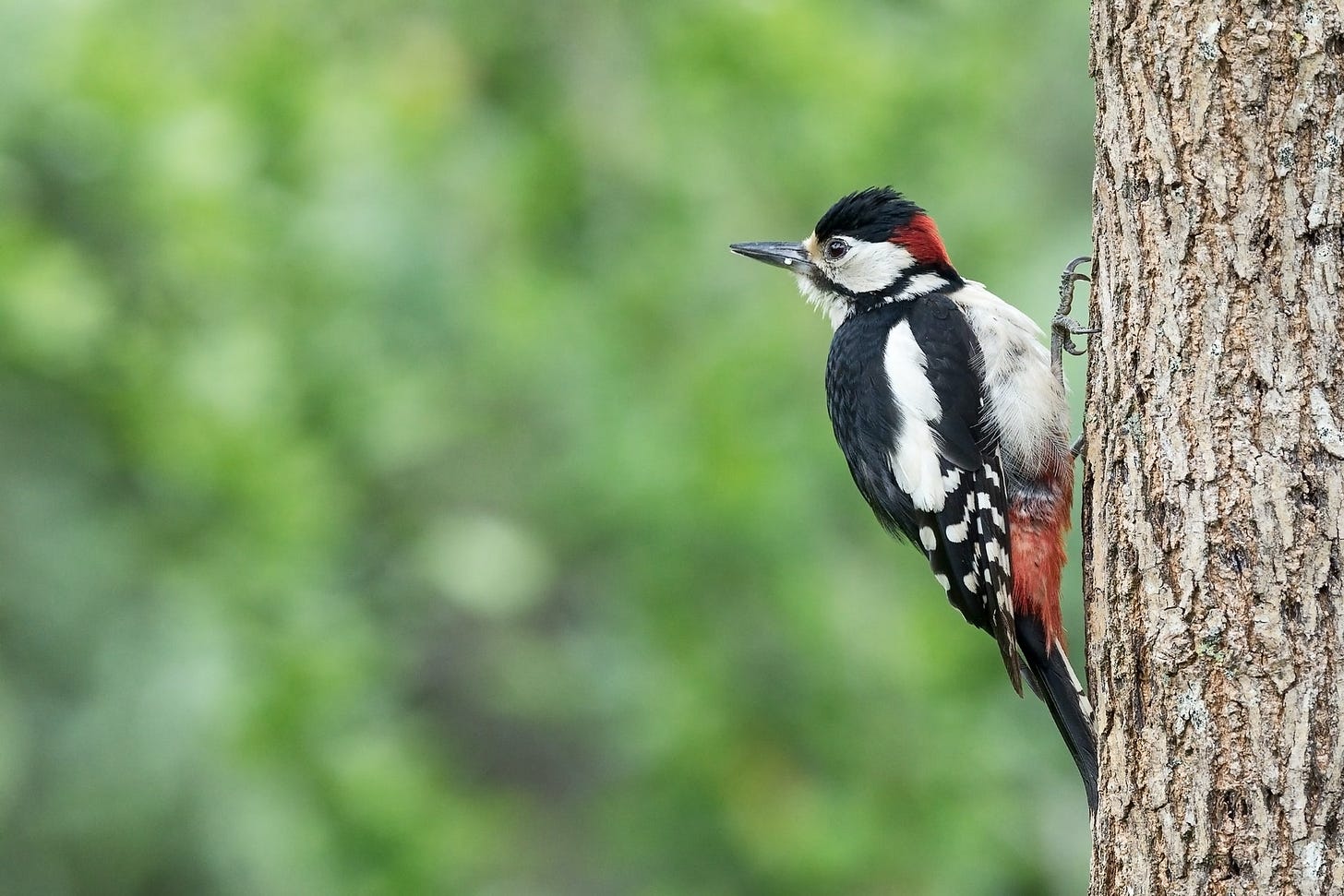
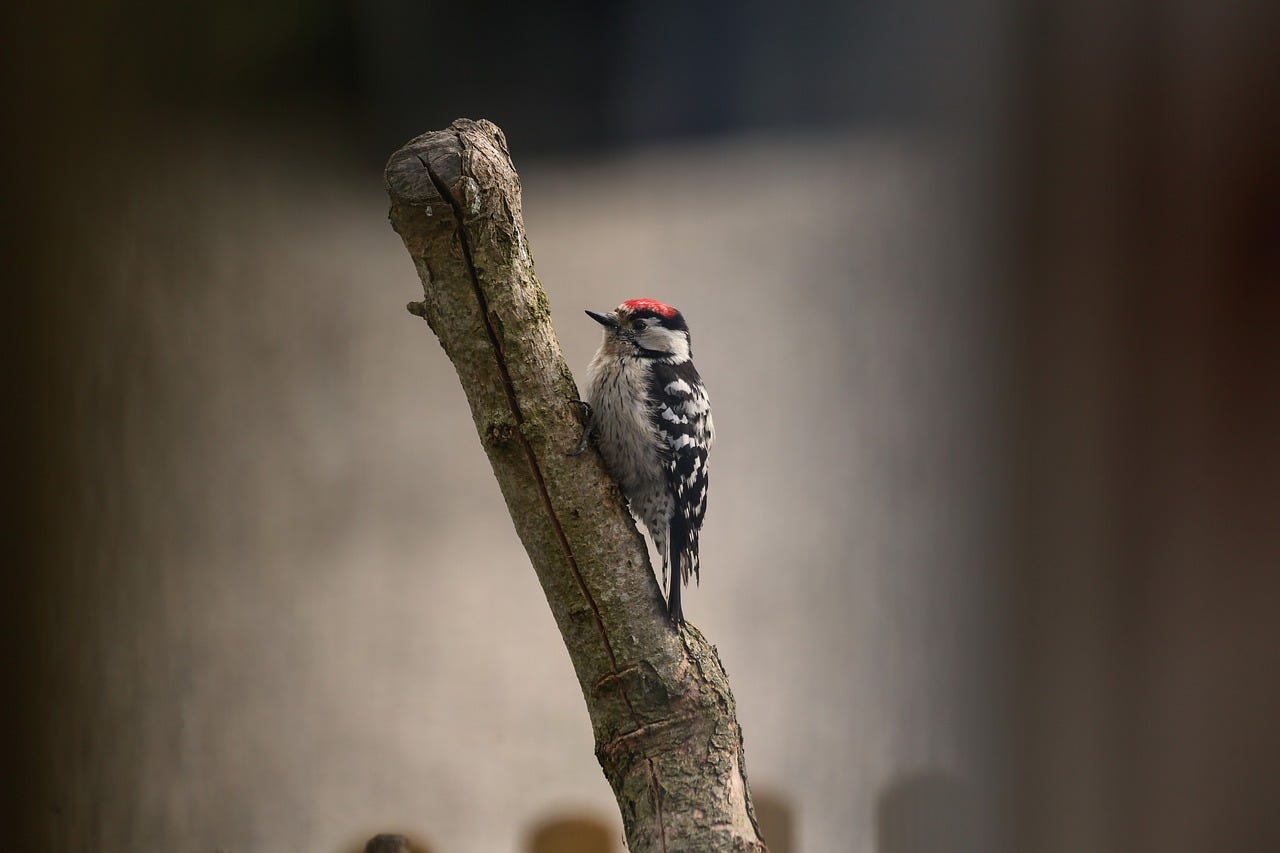




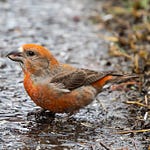

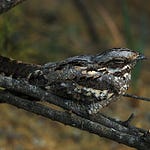
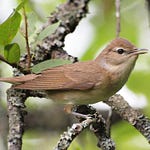

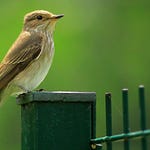


Share this post